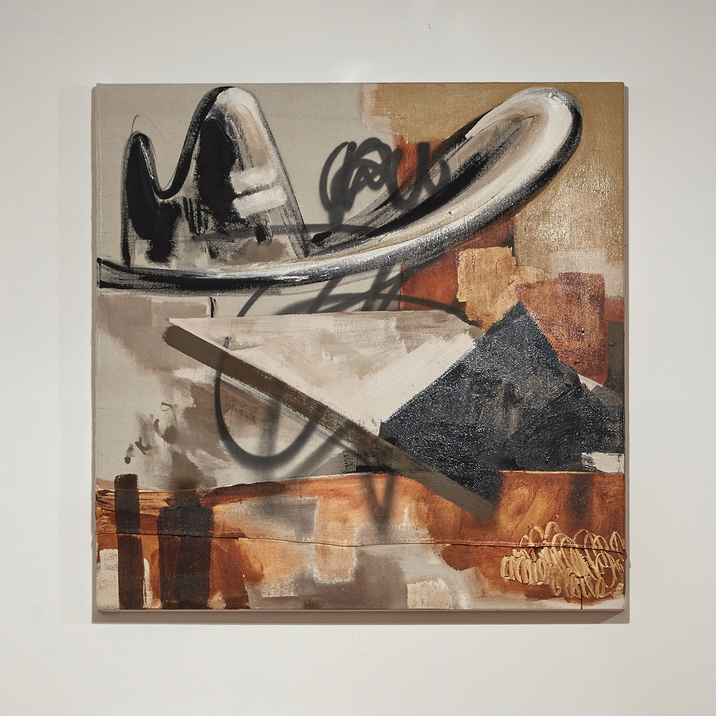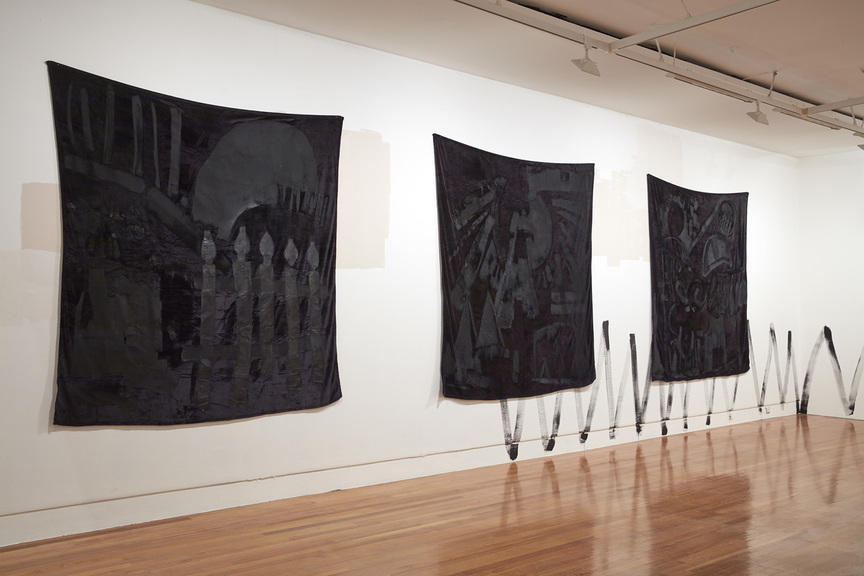-
From Current Issue
-
- Editor’s Letter Fire in the Heart
- Reviews I Gusti Ayu Kadek Murniasih
- Reviews 11th Seoul Mediacity Biennale: “One Escape at a Time”
- Dispatch Networked China
- One on One Monira Al Qadiri on Yukio Mishima
- Essays The rise of independent art spaces in pandemic-era Shanghai
- Features Tuan Andrew Nguyen
- Table of Contents
- Web Exclusives
- Archive
- Subscribe

R
E
V N
E
X
T
Installation view of CHRISTINA PATAIALII’s “Solid Gold” at Te Tuhi, Auckland, 2018–19. Photo by Sam Hartnett. Courtesy Te Tuhi.
In a review of Christina Pataialii’s exhibition, “Solid Gold,” presented by the Te Tuhi gallery in Auckland, a critic described the artist’s work as having “more anger than angst.” The statement reveals how some expect Pataialii, a young, second-generation Samoan woman living in New Zealand, to express an anguish born of post-colonial hardship and the uncertain immigration policies of governments past. The article went on to portray the show as containing a “‘Proud to be a Black Woman pushing against the Dominant White/Western Hegemony’ Pasifika ethos” and compared it to the outputs of another non-Pākehā artist, cementing the author’s prescriptive reading—angry or angsty—which is often imposed on New Zealand’s minority artists.
The collective history of New Zealand’s minority populations and Pataialii’s personal experience with navigating a predominantly Pākehā working-class society have undoubtedly influenced her work. Many of the abstracted motifs in Pataialii’s compositions—cowboy hats (as in Plains, 2018), ladders (Fortunate Son, 2018) and picket fences (Bad moon Rising, 2018)—reference the conditions of her youth. For example, cowboy hats exemplify a sartorial staple of 1980s bogan culture as well as the Western expansionist spirit embodied in many American classic hits of the period. Picket fences symbolize both aspirational classism and the barriers to social mobility. To immigrants, specifically, these borders represent an insidious presence, and act as a dark reminder of the dawn raids of the 1970s and ’80s, when police would storm the houses of immigrant neighborhoods in search of overstayers—a fearful time familiar to her father’s generation. However, to view Pataialii’s practice within the two-dimensional terms of angry or angsty is to miss something wonderful—the real strength of her show came from how sociocultural narratives were intertwined with sophisticated formal considerations.
“Solid Gold” evidenced Pataialii’s concerns with pushing the constraints of canvas and paint. Prior to attending art school, she spent her youth traveling around Auckland with her Samoan-born father, working at building sites. She learned to perfect the practical art of painting in housing renovations—loading a brush, filling a paint gun and covering graffiti. In her recent exhibitions, such as “Debt” at RM Gallery, Auckland, in 2018, and “The Tomorrow People” at Wellington’s Adam Art Gallery in 2017, Pataialii’s paintings were confined to the surface of her canvases. For “Solid Gold,” she was free to consider the entire exhibition space, and, as a result, she absorbed it, introducing paintings on stretched drop-cloths in a sly nod to Arte Povera, and all-black works on loosely hung mink blankets (a staple of Pacific Island family rooms), in homage to the black paintings of the late Ralph Hotere. She also extended the painted surface across the walls of the gallery with a spray gun and roller, so that the paintings merged with and challenged the architecture. Yet her approach is not aggressive. There was a conviviality between the works and the space, as embodied by the paint that seemed to joyfully zigzag off the canvas and onto the walls, and the large mural that hugged a corner of the room. The classic Americana of the radio station Solid Gold, Pataialii’s audio companion as she painted various houses, only served to further imbue “Solid Gold” with its light touch. Such negotiated tactics reflect her classical art school education and early immersion in working-class street culture.
Perhaps what did underlie “Solid Gold” was a sense of nostalgia—one that was broken down by the artist to show how the past can look very different, depending on where one stands. The imagery of “Solid Gold” simultaneously reflects the golden era of New Zealand’s social experiment, constructed around nuclear families and well-maintained lawns behind picket fences, and the pathos of nationalistic narratives, which excluded certain groups. Through such imagery, the show alluded to the contemporary resurgence of the nationalist right and the liberalizing movements of the political left, and pondered diversity, community and the politics of exclusion. By marking the white walls of the space, Pataialii not only implicated the institution in a predominately pink-skinned history, she also claimed a part of it for herself and asserted a demand for the place of others.
Christina Pataialii’s “Solid Gold” is on view at Te Tuhi, Auckland, until March 10, 2019.
To read more of ArtAsiaPacific’s articles, visit our Digital Library.

















